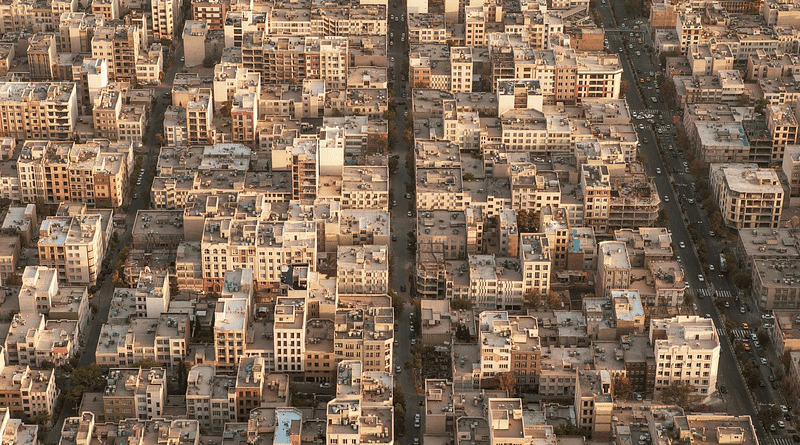Report On Iran’s Housing Problem: Iranians Living On Rooftops – OpEd
By Elaheh Nafari Zavieh*
Housing is one of the main and influential indicators in the economic growth of societies. Reports show that among different industries, the construction industry can be considered as Iran’s primary industry since construction has been the most efficient and fluctuating industry in the last forty years of Iran.
In the past years, housing prices have skyrocketed unbelievably and are now a major problem for Iranians, especially in the capital Tehran. Statistics show that people in Tehran spend 50-60% of their expenses on housing costs alone.
As housing was added to the stock market, fluctuations have affected the housing prices and rent, and lower-income parts of the society can no longer afford to pay rent. Some have resorted to renting homes shared with another family or renting rooftops.
On November 9, Naser Amani, a member of Tehran’s City Council said it has been 50 years that residential documents have not been updated. He added that people are renting out rooftops, basements, backyards, and even sharing homes.
Housing problems for workers
Workers are constantly under the stress of how to provide food for their families, the school costs of their children, and provide for their family’s needs. Iranian workers come home after a hard day’s work, knowing that at home they are not at ease and have to pay for their delayed rent and ask the landlords for a few more days’ time. Workers have taken to committing suicide in the past months out of poverty and not being able to make ends meet for their families. A worker’s wages are to 3-4 million tomans (about $106-$142) which, if paid on time, will only amount to about 10 days of living costs.
Empty solutions to Iran’s housing problem
In September, Iran’s Central Bank reported that since last year, there was a 30.5% increase in housing prices. On October 24, state-run media wrote that Iran’s Ministry of Roads and Urban Construction said there are two million uninhabited houses in Iran, and they will use these to balance the market, lowering house costs. In the report, Farid Qadiri, a housing expert, in Iran said that 70% of Iranians in Tehran live under the housing poverty line, spending over 30% of their annual or monthly income on housing.
However, with Iran’s institutionalized corruption, it is unlikely that the state will be able to solve the housing problem for Iranians.
Raisi’s promise to build one million houses
Iran’s president, Ebrahim Raisi, promised one million houses a year in his presidential elections. Iran’s Minister of Roads and Urban Construction said they can build four million houses in four years, and they will have to build 2,740 units a day to reach this. If we divide this number by 24 hours, it means there should be 114 houses built an hour. Therefore, to reach one million houses a year, 114 houses should be built by the hour.
This is while Saeed Mohammad, a former general in the Islamic Revolutionary Guard Corps (IRGC), said to build one million houses, a budget of 500 trillion tomans will be required, which is five times the country’s construction budget. Even if Iran were to inject this much money into circulation, it will result in a higher inflation rate, which has already broken records in the past years. This is while on August 3, Raisi said the government has a 450 trillion tomans budget deficit, and the inflation rate is over 44%. Therefore, empty promises made by Iran’s president are not only unfounded but will fuel the anger accumulating in impoverished Iranians, who have had enough of a corrupt clerical rule.
*Elaheh Nafari Zavieh, Political analyst and activist

